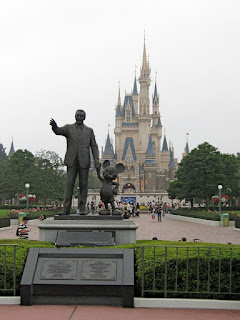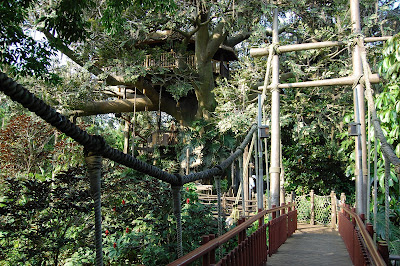I find it challenging this week to write about the details and stories of the Disney Parks at home, when my heart and mind are with my colleagues abroad. Friday's earthquake and tsunami continue to impact the people of Japan and will do so for some time. My wife and I took our first trip to Japan and the Tokyo Disney Resort eight years ago today. It was an incredible experience. The parks there are spectacular, and the people are among the most friendly, kind and helpful we've ever met.
All reports indicate that our fellow cast members and their families are safe, and there has been minimal damage to the resort facilities. The neighboring communities, however, continue to struggle. For that reason, Oriental Land Company (OLC is the company which owns and operates the Tokyo Disney Resort) has decided to cease operations at their parks and resorts for an undetermined period of time, so their cast and potential guests may focus on what is truly important right now.
OLC is helping the community in other ways. Freed of the responsibilities of work, Tokyo Disney Resort cast members have been volunteering en masse to help their neighbors recover and rebuild. Ceasing operations also allows for the conservation of critical water and energy resources. To help preserve as much fresh water as possible for drinking, OLC has even taken the step of turning over the massive water supply within Tokyo DisneySEA to nearby Urayasu City, for use in plumbing and other non-potable functions.
The Japanese are wonderful people and incredibly resilient. Eventually, the Tokyo Disney Resort will reopen, and cast members there will resume the business of creating magical experiences for their guests. Until then, we wish them the best in their recovery.
If you're able to help, please do so. You may donate to the American Red Cross directly via their site or text REDCROSS to 90999 (U.S. only) to give $10 to support Japan earthquake and Pacific tsunami relief efforts.
The Walt Disney Company has given $2.5 million in humanitarian aid to the Red Cross and has offered to match cast member donations up to $1 million. My wife and I have already contributed. If you're a fellow cast member, we urge you to join us and give whatever you can afford. You'll find the link in the message from Bob Iger on the Home page of The Hub.















 Florida parade was then packed up and shipped to France, where it played at Disneyland Paris from its 1992 opening through 2003. It has since been retired in favor of Disney's
Florida parade was then packed up and shipped to France, where it played at Disneyland Paris from its 1992 opening through 2003. It has since been retired in favor of Disney's 


















